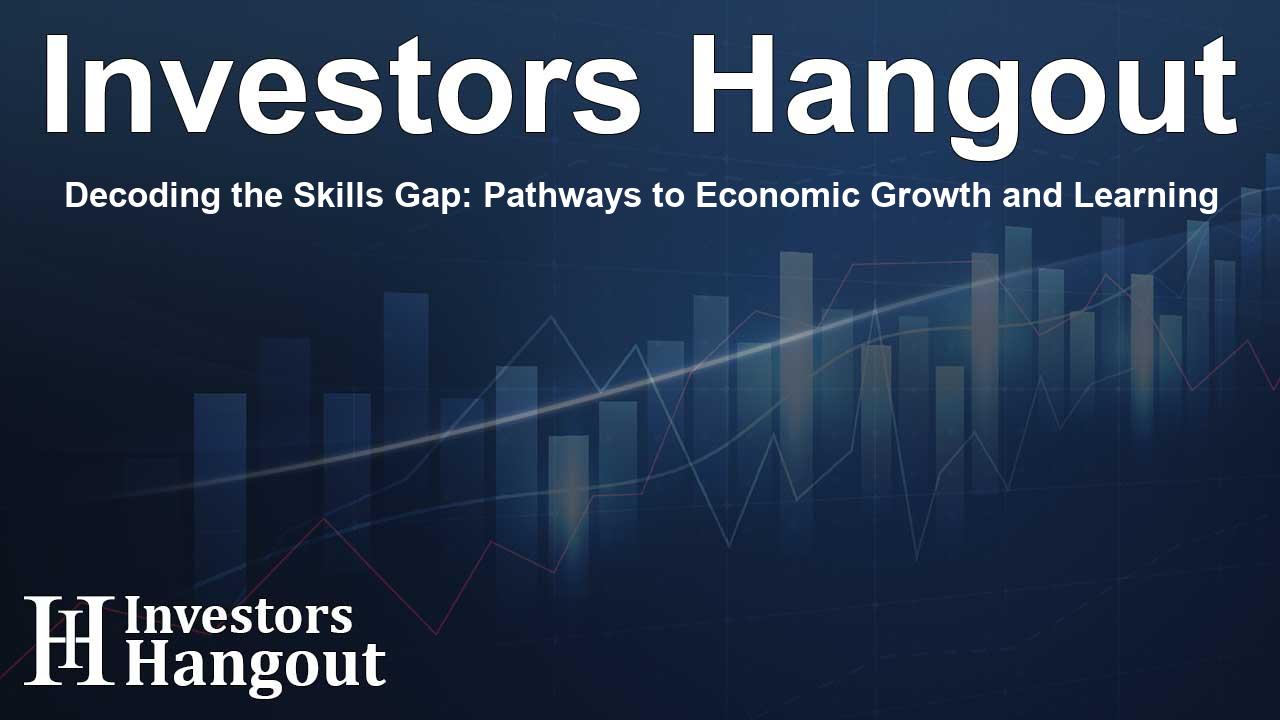Decoding the Skills Gap: Pathways to Economic Growth and Learning

Understanding the Urgency of the Skills Gap
A recent report has brought to light the alarming consequences of a widening skills gap within the workforce. This gap poses significant risks to economies, primarily driven by rapid demographic changes and technological advancements. As organizations face a significant mismatch between the skills available and those demanded, the potential implications are staggering. The report highlights a massive annual loss of $1.1 trillion for the U.S. economy due to inefficient career transitions and learning gaps.
The Need for New Learning Paradigms
To address this pressing dilemma, a strong emphasis has been placed on adopting modern skilling pathways. This initiative focuses on fostering an environment where individuals learn effectively and are prepared for continuous adaptation in their careers. The concept of "learning to learn" is emerging as a fundamental skill that educators and corporate trainers need to cultivate. It promotes self-regulation, critical thinking, and goal-setting, equipping learners to navigate their educational and career journeys successfully.
Key Imperatives for Action
The report outlines two essential areas of focus for immediate collaborative action among employers, educators, and policymakers. Firstly, there is a critical need for organizations to prioritize new methods of learning that empower the workforce to embrace change and opportunities for advancement. Secondly, developing dynamic and clear skilling pathways that are flexible to the needs of future work environments is essential.
Reimagining Career Paths
Traditional career trajectories are evolving, and the demand for new, innovative approaches to education and skills development is becoming paramount. The emphasis is shifting toward work-based learning solutions, such as apprenticeships. These programs not only align learning with real-world demands but also provide mentorship opportunities to guide individuals through their career transitions. By implementing these strategies, the U.S. could realize an economic boon, with estimates indicating potential savings of around $40 billion annually by optimizing the time it takes to transition from education to employment.
Collaboration for Sustainable Change
As the workforce landscape continues to change due to factors like automation and artificial intelligence, collaborations across various sectors will become increasingly important. Leaders like Omar Abbosh, the CEO of Pearson, emphasize the importance of partnerships among educators, businesses, and governments. By working together, stakeholders can find sustainable solutions that prevent the current skills gap from evolving into a wider chasm.
The Role of Technology and Innovation
The report also delves into the role of technology in bridging the skills gap. Innovations like virtual reality for career exploration and AI-powered career mapping are highlighted as tools that can significantly enhance learning experiences. The ability to track and validate skills digitally will further streamline the process of transitioning careers while ensuring individuals possess the qualifications needed for the jobs available.
Conclusion: Opportunities Ahead
Realizing the full potential of the workforce means addressing the skills gap head-on. By prioritizing effective learning methods and reimagining traditional career paths, we can unlock unprecedented economic opportunities. The changes suggested in the report can facilitate life-changing opportunities for individuals worldwide and transform both personal and professional development in the years to come.
Frequently Asked Questions
What is the main focus of the report?
The report emphasizes the need to address the skills gap caused by inefficient career transitions and learning barriers that lead to significant economic losses.
How much is the U.S. economy losing annually due to the skills gap?
The report states that the U.S. economy loses approximately $1.1 trillion each year due to this skills gap.
What are the recommended strategies for improving skills development?
The report recommends prioritizing effective learning methods and developing flexible, modern skilling pathways that adapt to changing workforce needs.
How can technology assist in bridging the skills gap?
Technological innovations like virtual reality, AI-powered career mapping, and digital wallets for skills tracking are highlighted as crucial tools for enhancing learning and career transitions.
Who needs to collaborate to tackle the skills gap?
Collaboration is essential among employers, educators, workers, and government entities to implement effective solutions and prevent the skills gap from widening further.
About The Author
Contact Ryan Hughes privately here. Or send an email with ATTN: Ryan Hughes as the subject to contact@investorshangout.com.
About Investors Hangout
Investors Hangout is a leading online stock forum for financial discussion and learning, offering a wide range of free tools and resources. It draws in traders of all levels, who exchange market knowledge, investigate trading tactics, and keep an eye on industry developments in real time. Featuring financial articles, stock message boards, quotes, charts, company profiles, and live news updates. Through cooperative learning and a wealth of informational resources, it helps users from novices creating their first portfolios to experts honing their techniques. Join Investors Hangout today: https://investorshangout.com/
The content of this article is based on factual, publicly available information and does not represent legal, financial, or investment advice. Investors Hangout does not offer financial advice, and the author is not a licensed financial advisor. Consult a qualified advisor before making any financial or investment decisions based on this article. This article should not be considered advice to purchase, sell, or hold any securities or other investments. If any of the material provided here is inaccurate, please contact us for corrections.
